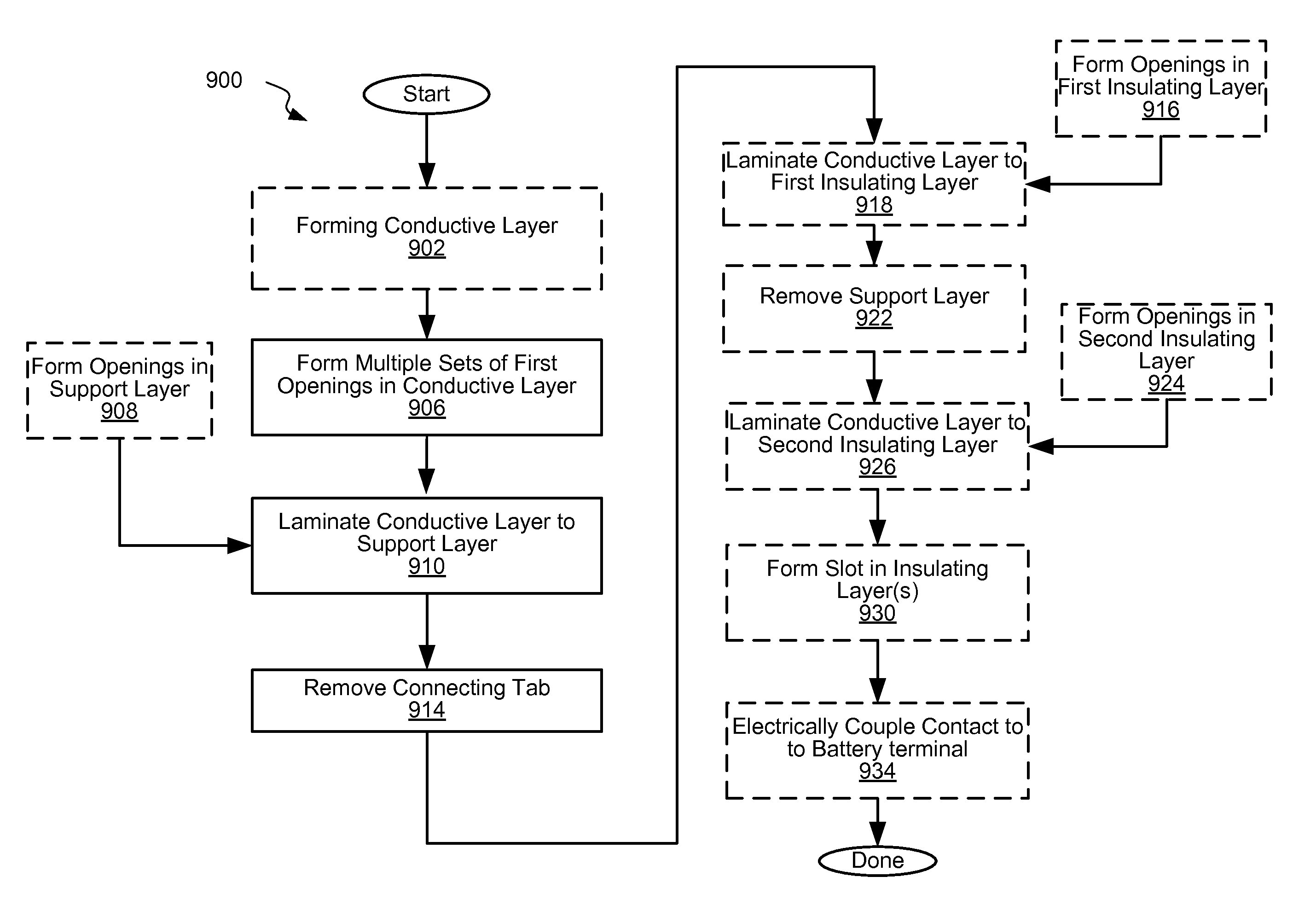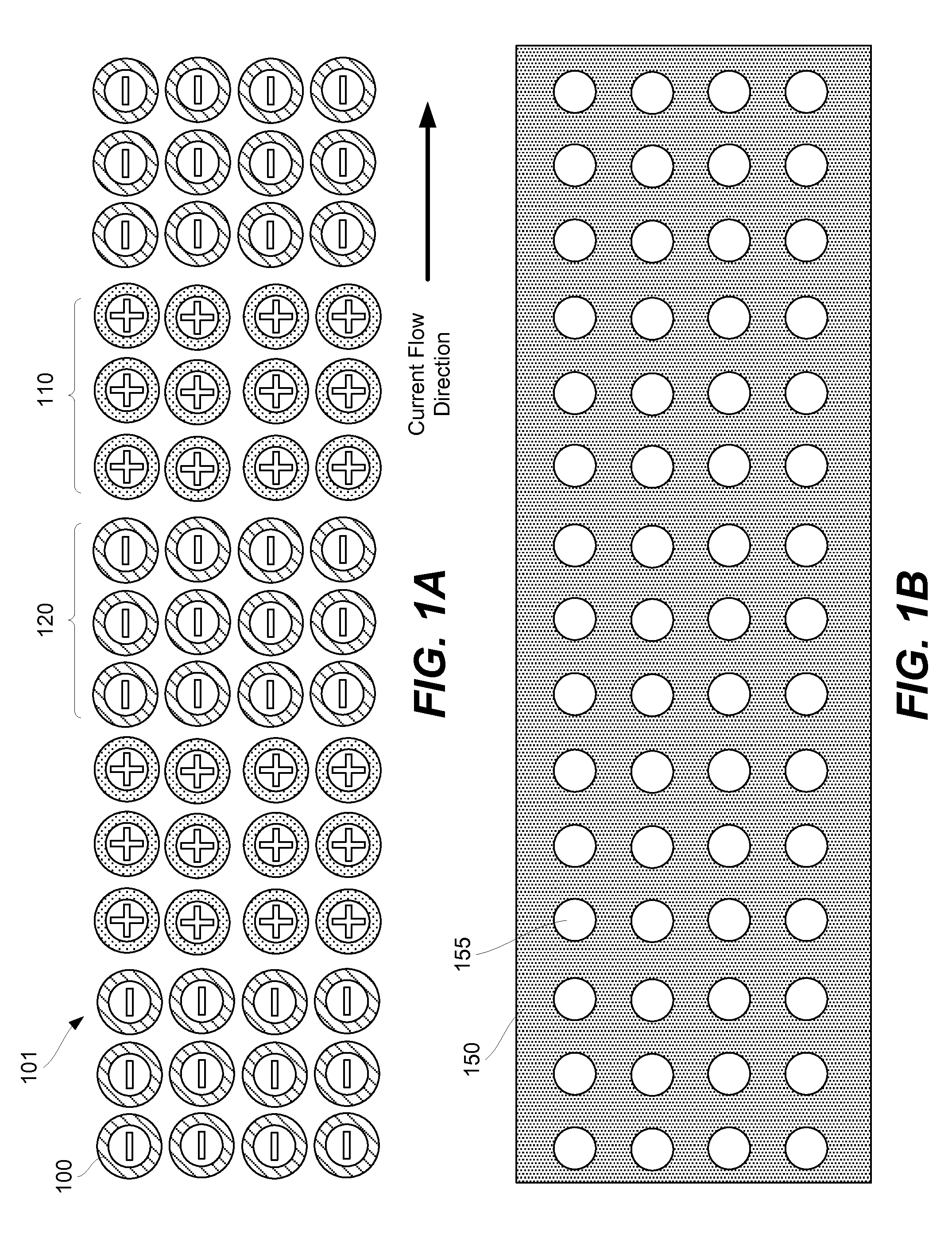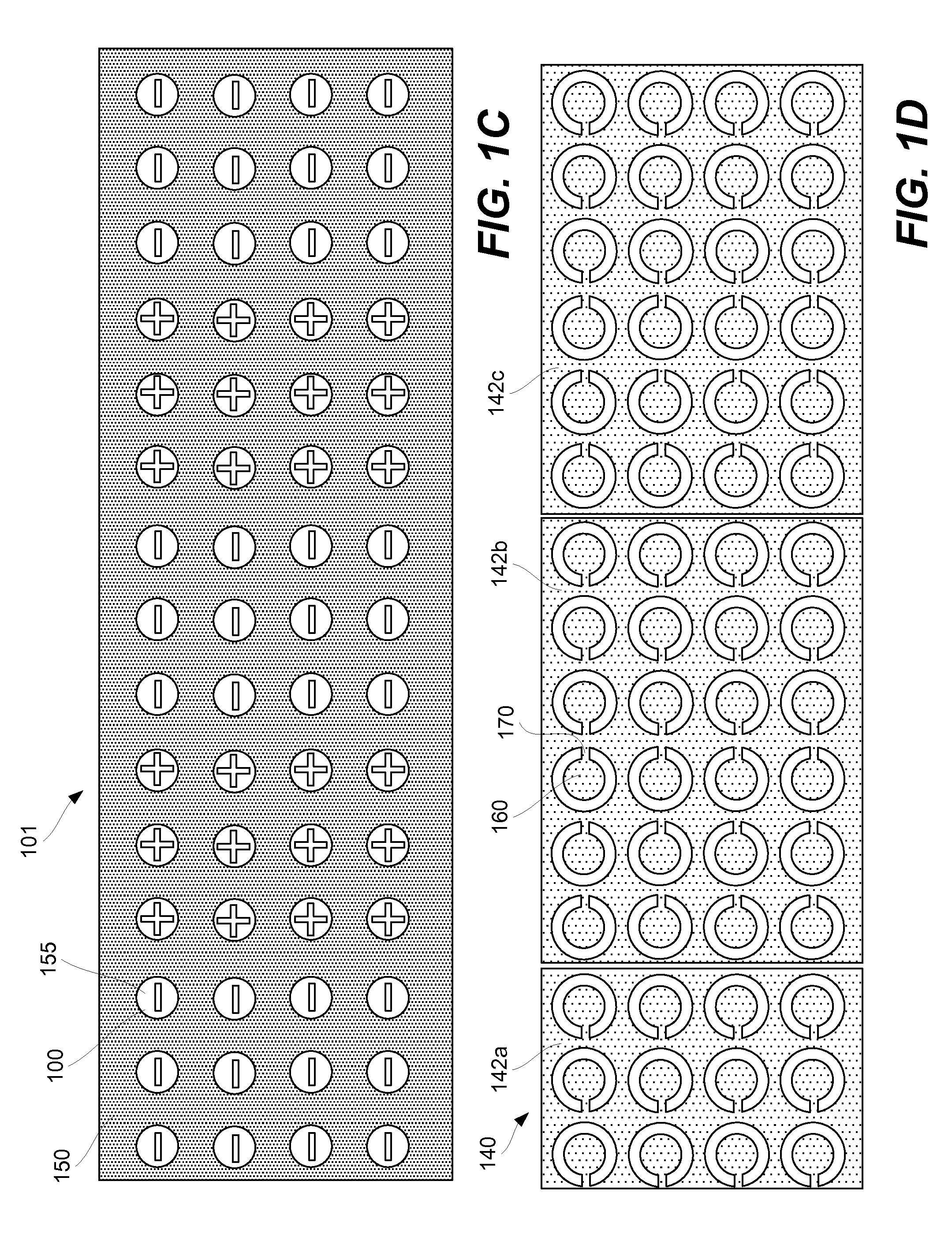Interconnect for battery packs
a battery pack and interconnection technology, applied in the direction of laminating printed circuit boards, cell components, semiconductor/solid-state device details, etc., can solve the problems of loss of electrical connections, high cost of plates to manufacture and connect to battery terminals, circuits are generally limited to low-current applications, etc., to improve flexibility of a portion
- Summary
- Abstract
- Description
- Claims
- Application Information
AI Technical Summary
Benefits of technology
Problems solved by technology
Method used
Image
Examples
Embodiment Construction
[0074]The ensuing detailed description of embodiments of this disclosure will be better understood when read in conjunction with the appended drawings. As used herein, an element or step recited in the singular and proceeded with the word “a” or “an” should be understood as not excluding plural of said elements or steps, unless such exclusion is explicitly stated. Furthermore, references to “one embodiment” are not intended to be interpreted as excluding the existence of additional embodiments that also incorporate the recited features. Moreover, unless explicitly stated to the contrary, embodiments “comprising” or “having” an element or a plurality of elements having a particular property may include additional elements not having that property.
INTRODUCTION
[0075]Many modern battery packs includes many cells that need to be interconnected and connected to terminals of a battery pack. For example, the Model S manufactured by Tesla Corporation in Palo Alto, Calif. has thousands of 186...
PUM
| Property | Measurement | Unit |
|---|---|---|
| Flow rate | aaaaa | aaaaa |
| Electrical conductor | aaaaa | aaaaa |
| Electrical current | aaaaa | aaaaa |
Abstract
Description
Claims
Application Information
 Login to View More
Login to View More - R&D
- Intellectual Property
- Life Sciences
- Materials
- Tech Scout
- Unparalleled Data Quality
- Higher Quality Content
- 60% Fewer Hallucinations
Browse by: Latest US Patents, China's latest patents, Technical Efficacy Thesaurus, Application Domain, Technology Topic, Popular Technical Reports.
© 2025 PatSnap. All rights reserved.Legal|Privacy policy|Modern Slavery Act Transparency Statement|Sitemap|About US| Contact US: help@patsnap.com



